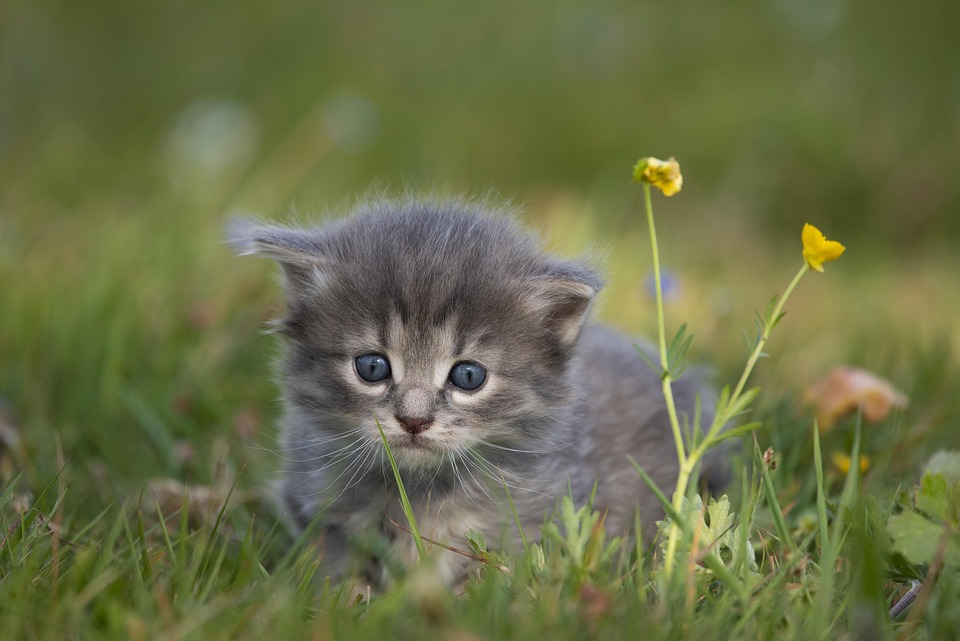
Kittens are bundles of energy, curiosity, and, sometimes, mischief. As much as we adore their playful antics, hyperactivity can become overwhelming for both the pet and the owner. This comprehensive guide explores effective strategies to manage and reduce hyperactivity in young cats, ensuring a harmonious home environment for all.
Understanding Kitten Behavior
Before diving into strategies, it’s essential to understand why kittens act the way they do. Naturally, kittens are more energetic than adult cats. They are in a crucial developmental stage, exploring their environment and learning vital survival skills through play.
Recognizing Normal Kitten Behavior
Normal kitten behavior includes high energy levels, curiosity, and a penchant for play. Their hyperactivity often peaks during the early morning and late evening hours, aligning with their natural hunting instincts.
When Hyperactivity Becomes a Concern
While some level of hyperactivity is normal, excessive behavior might indicate underlying issues such as stress, boredom, or health problems. It’s crucial to distinguish between normal playfulness and behavior that might require intervention.
Creating a Stimulating Environment
One of the most effective ways to manage a hyperactive kitten is by providing a stimulating yet calming environment. This helps satisfy their curiosity and energy needs without overwhelming them.
Interactive Toys and Puzzles
Invest in a variety of toys that challenge your kitten mentally and physically. Interactive toys, such as puzzle feeders or toys with unpredictable movements, can engage their senses and help expend energy constructively.
Vertical Space
Kittens love to climb and explore heights. Providing cat trees or shelves can help satisfy these instincts. Vertical spaces not only allow for exercise but also serve as safe spots where your kitten can observe their surroundings.
Safe Exploration
Ensure your home is a safe playground. Remove any hazardous items and provide areas where your kitten can explore freely. Rotating toys and regularly changing their environment can also keep things exciting and engaging.
Establishing Routine
Kittens thrive on routine. Establishing a consistent schedule for feeding, playtime, and rest can help manage their energy levels effectively.
Scheduled Playtime
Incorporate multiple short play sessions throughout the day rather than one long session. This mimics their natural hunting patterns and helps prevent overstimulation.
Feeding Routine
Feeding your kitten at regular intervals helps in maintaining their energy levels. Consider incorporating feeding puzzles to stimulate their mind while eating.
Rest and Sleep
Ensure your kitten has a quiet, comfortable space for rest. Adequate sleep is crucial for their development and helps regulate their energy levels.
Training and Behavioral Techniques
Training your kitten can help manage hyperactivity and instill good behavior early on. Positive reinforcement is a key technique in training young cats.
Positive Reinforcement
Reward desirable behavior with treats, affection, or playtime. This encourages your kitten to repeat those behaviors, gradually reducing unwanted hyperactivity.
Clicker Training
Clicker training is an effective method to communicate with your kitten. The sound of a click followed by a reward helps them associate the noise with positive behavior.
Redirecting Energy
If your kitten is engaging in undesirable behavior, such as scratching furniture or biting, redirect their energy to a more appropriate activity. Offer them a toy or engage them in a play session to reinforce positive behavior.
Addressing Underlying Issues
Sometimes, hyperactivity in kittens may be a symptom of underlying issues. Identifying and addressing these can significantly improve their behavior.
Health Check
If your kitten’s hyperactivity seems excessive, consult a veterinarian to rule out any health issues. Conditions like hyperthyroidism or parasites can lead to increased energy levels.
Stress and Anxiety
Stress and anxiety can also manifest as hyperactivity. Identify potential stressors, such as changes in the home environment or lack of socialization, and work to minimize them.
Socialization
Proper socialization from an early age can help reduce anxiety-related hyperactivity. Expose your kitten to various experiences, people, and other animals to build their confidence.
When to Seek Professional Help
If your efforts to manage hyperactivity are not yielding results, it may be time to seek professional help. Animal behaviorists or trainers can provide tailored strategies and insights specific to your kitten’s needs.
Conclusion
Managing a hyperactive kitten requires patience, understanding, and strategic intervention. By creating a stimulating environment, establishing routines, and employing positive training techniques, you can help your kitten develop into a well-adjusted and calm adult cat. Remember, each kitten is unique, and it may take time to find the right balance that works for them. With consistent effort and a little guidance, mastering kitten calm is well within reach.
#ChatGPT assisted in the creation of this article.







